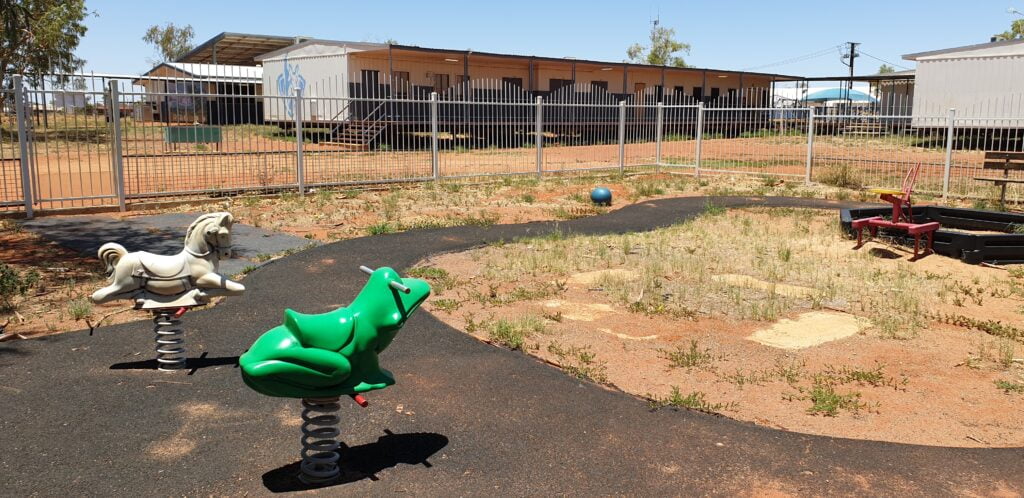The preschool play area in a remote NT school
If you’re getting a crumbling feeling when it comes to school infrastructure, you’re not alone. And you’re not wrong, writes Branch President Jarvis Ryan
School infrastructure may not be the world’s sexiest subject. But it is an important and often overlooked part of the education funding story.
Firstly, because bricks and mortar are quite literally what our school buildings are made of. We often take it for granted that school facilities will be there for students who need them and will be built to a high standard. There can be no quality education without them.
Secondly, because government decisions about where, when and how much to spend on bricks and mortar says a lot about official priorities. School infrastructure is not cheap. It requires a significant commitment from government, not only to build it, but also to maintain it – especially in the Territory context, where climate and remoteness impact greatly on cost.
Many of our schools are falling into of disrepair due to insufficient capital works spending from everything to expenditure on new buildings through to urgent repairs and maintenance.
NT Government budget papers over the past several years tell the story. Spending on new major works (capital works projects worth more than $500,000) has trended downwards and in the 2020-21 budget not a single dollar has been allocated to new major works.
| Budget Year | New major works spending |
| 2016-17 | $27m |
| 2017-18 | $43m |
| 2018-19 | $22m |
| 2019-20 | $31m |
| 2020-21 | $0 |
Source: NT Budget papers
The largest line item in the major works pipeline (carried over from last year) is $6.1m for transportable classrooms. More on them in a moment.
The repairs and maintenance budget sits at $30m. It has been reduced by about 10% compared to several years ago.
The infrastructure story shows how governments can fail to meet their obligations without making large headline cuts. Instead, they can simply not maintain budgets, or allow them to diminish over time, and not repair things as they degrade and need fixing.
This is what has happened to NT public school infrastructure in recent years.
Its effects are clearly worst felt in our remote schools. These are schools that are out of sight, out of mind as far as most politicians are concerned.
Take Alekarenge in the Barkly region. We highlighted the plight of Alekarenge a year ago with a front page story in our Territory Educator magazine.
Students are being educated in crumbling structures that were installed as temporary buildings 50 years ago. Five decades.
These are buildings in which parents in major towns and cities of Australia would never accept their children being educated.
In response from pressure from the AEU and the local community, the Government agreed to provide three new transportable buildings for the school. They are due to be installed soon.
The transportable buildings are modern and will represent an upgrade, but we can’t allow temporary buildings to become the new normal for remote school infrastructure. The Alekarenge community, along with many others, are right to demand a commitment from government for a longer-term, permanent solution in the form of a new school.
In many other communities, students are learning in dilapidated classrooms (often made from asbestos) that were condemned decades ago. When this is deemed officially acceptable, is it any wonder that we don’t get high levels of engagement in schooling from Indigenous communities?
These communities continue to be let down not just by the NT Government, but at the federal level as well. The Federal Government has not provided capital works funding for public schools since 2017. It has, however established a $1.9 billion capital works slush fund for private schools.
Once again, the decisions governments make about where and how they allocate funding speaks volumes about which students they consider to be deserving.
This article was originally published in the Semester 1, 2021 edition of the Territory Educator magazine.

